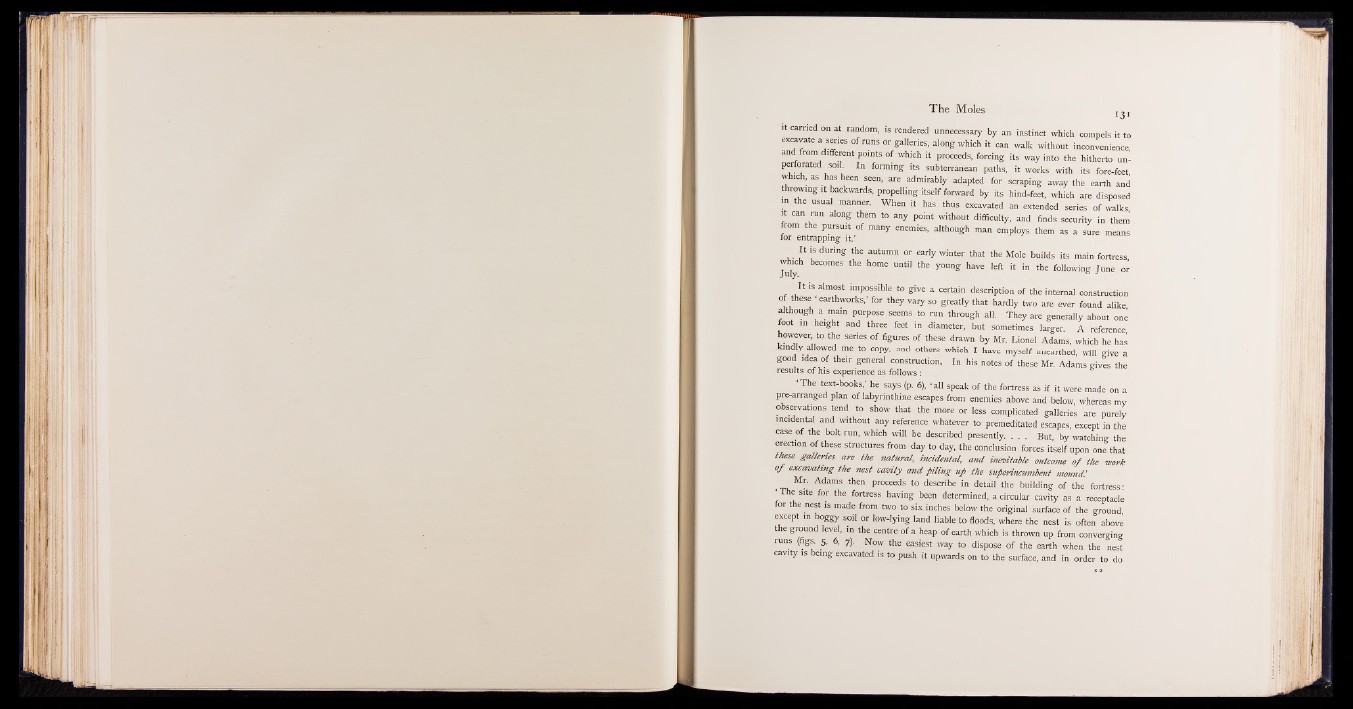
The Moles
it carried on at random,|| rendered unnecessary by an instinct which compels it to
eiccavate a series of runs or galleries, along which it can walk without inconvenience
and from different points of which it proceeds, forcing its way into the hitherto un-
perforated soil In forming its subterranean paths, it works with its fore-feet
which, as has been seen, are admirably adapted for scraping away the earth and
throwing it backwards, propelling itself forward by its hind-feet, which are disposed
in the usual manner. When it has thus excavated an extended series of walks
it can run along them to any point without difficulty, and finds security in them
from the pursuit of many enemie||aIthough man employs them as a sure means
for entrapping it.’
It is during the autumn or early winter that the Mole builds its main fortress
which becomes the home until the young have left it in the following June o^
It is almost impossible to give a certain description of the internal construction
of these earthworks,' for they vary so greatly that hardly two are ever found alike
although a main purpose seems to run through a lt They are generally about one
foot in height and three feet in diameter, but sometimes larger. A reference
however to the series of figures d | t h S drawn by Mr. Lionel Adams, which he lum
kindly allowed me to copy, and others, which I have myself unearthed, will give a
good idea of their general construction, In his notes of these Mr. Adams gives the
results of his experience as follows :
‘ The text-books,' he says (p. 6), ‘ all speak of the fortress as if it were made on a
pre-arranged plan of labyrinthine escapes from enemies above and below, whereas my
observations tend to show that the more or less complicated galleries are purely
incidental and without any reference whatever to premeditated escapes, except in the
case of the bolt run, which will be described presently. . . . But, by watching the
erection of these structures from day to day, the conclusion forces itself upon one that
these galleries are the natural, incidental, and inevitable outcome o f the work
o f excavating the nest cavity and filin g u f the superincumbent mound.'
Mr. Adams then proceeds to describe in detail the building of the fortress:
'The site for the fortress having been determined, a circular cavity as a receptacle
for the nest is made from two to site inches below the original surface of the ground,
except in boggy soil or low-lying land liable to floods, where the nest is often above
the ground level, in the centre of a heap of earth which is thrown up from converging
runs (figs, 5, 6, 7). Now the easiest way to dispose of the earth when (the nest
cavity is being excavated is to push it upwards on to the surface, and in order to do